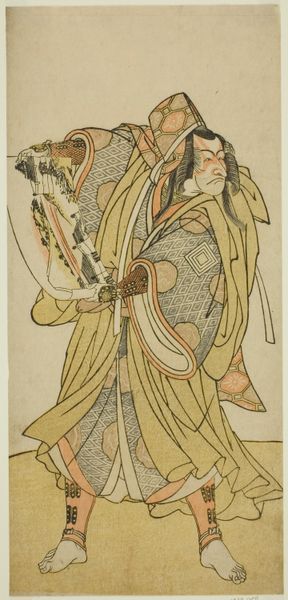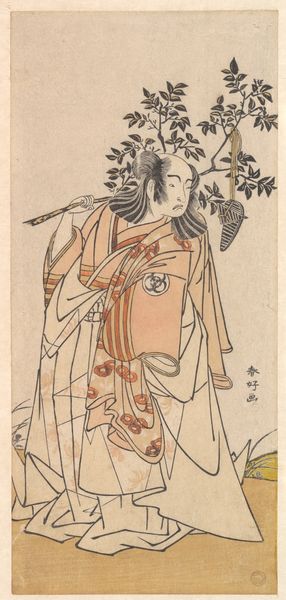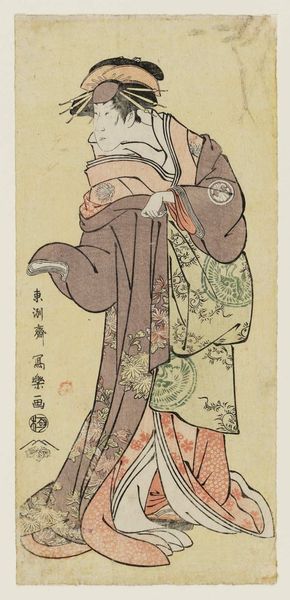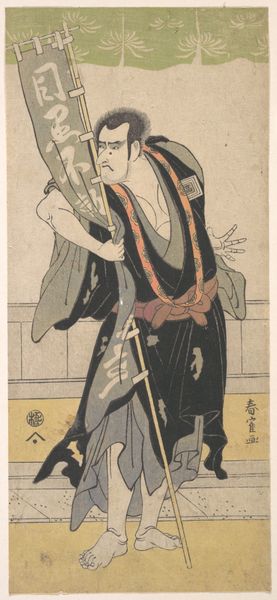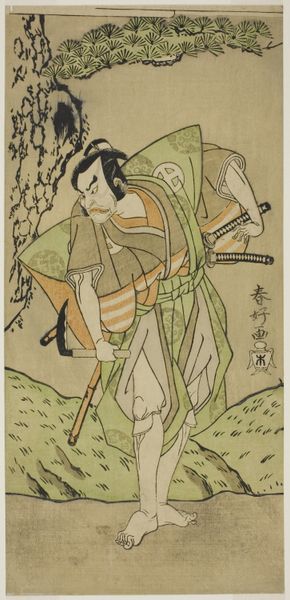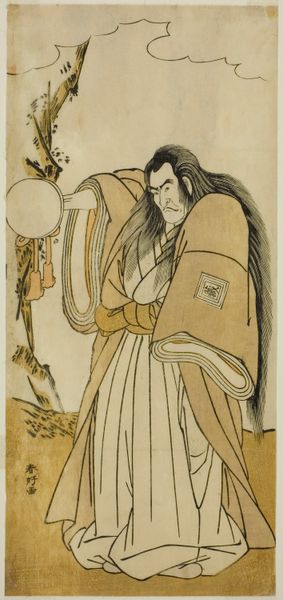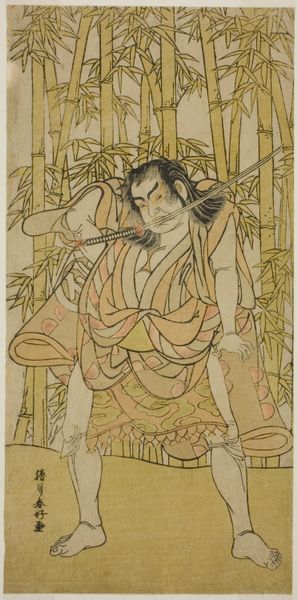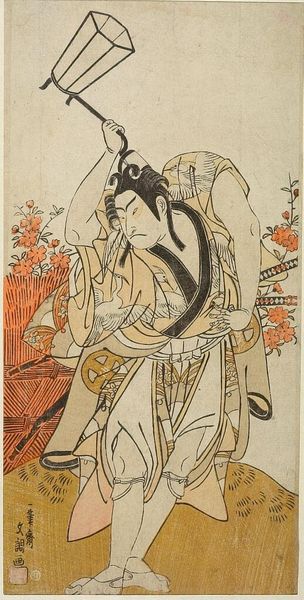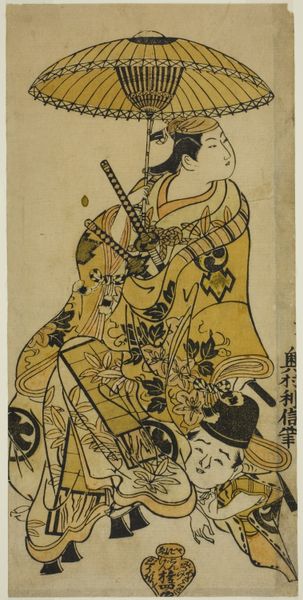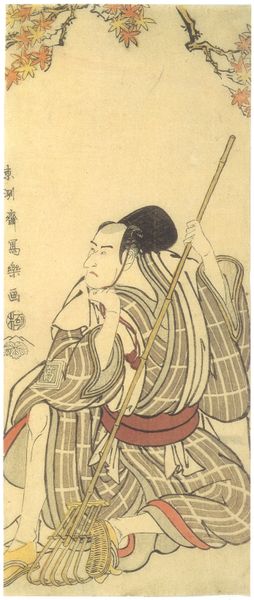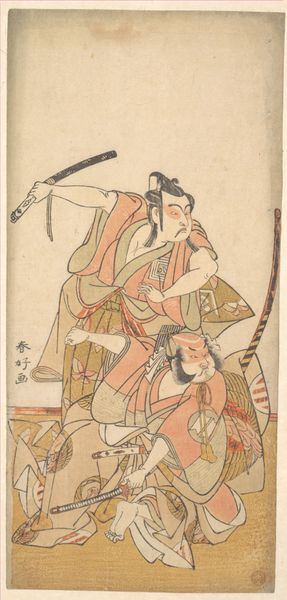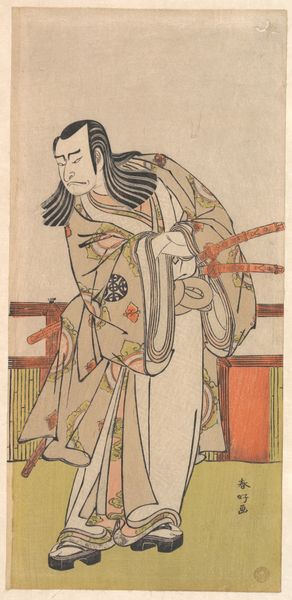
The Actor Nakamura Nakazo I as the Yakko Nakahei Disguised as Miura Arajiro (?) from the Play Ise Heishi Eigo no Koyomi (?), Performed at the Ichimura Theater (?) in the Eleventh Month, 1782 (?) c. 1782
0:00
0:00
print, woodblock-print
#
portrait
#
narrative-art
# print
#
asian-art
#
ukiyo-e
#
japan
#
figuration
#
woodblock-print
Dimensions: 32.6 × 15.1 cm (12 13/16 × 5 15/16 in.)
Copyright: Public Domain
Curator: Looking at this dramatic stance and fierce expression, the theatrical energy is immediately apparent! Editor: Absolutely. The tension is palpable. It’s contained, yet explosive, like a coiled spring ready to unleash. Curator: Indeed. We are viewing “The Actor Nakamura Nakazo I as the Yakko Nakahei Disguised as Miura Arajiro (?),” a woodblock print crafted around 1782 by Katsukawa Shunko. The Art Institute of Chicago houses this vibrant example of ukiyo-e portraiture. The image presents a Kabuki actor, embodying not one, but perhaps two distinct characters in a moment of dramatic unveiling. Editor: I see multiple layers of symbolism in the costuming and stagecraft depicted here. Look at the pine tree in the background; it is an important element of Japanese culture, representing longevity, steadfastness and resilience, does it act as a visual metaphor for the actor's enduring presence, or even for the Kabuki tradition itself? Curator: It's likely the pine is intended to function on multiple levels, which is often the case with these prints. Shunko was working in a milieu where theatre, social critique, and popular culture converged. Kabuki performances often provided veiled commentaries on the ruling class, allowing critique through allegory and wit. Editor: And notice how his arms are posed: the movement has roots in performance and even pre-dates the moment captured in time by Katsukawa Shunko. It transcends its original usage, hinting at universal themes of conflict, challenge, and the power of disguise. Curator: Exactly! The actor is a conduit, a figure through which broader societal narratives play out. By depicting Nakamura Nakazo in character, Shunko comments on the socio-political landscape, making us think about the performance of identity in everyday life. Editor: Looking at the overall impression, this isn’t simply documentation; it's active interpretation. Shunko's artwork allows us to trace the threads that connect individual artistry with the collective consciousness of Edo-period Japan. Curator: Yes, and hopefully it makes viewers reflect on performance in a contemporary light, understanding how complex the layers of performance, social expectation, and self-expression really are.
Comments
No comments
Be the first to comment and join the conversation on the ultimate creative platform.
